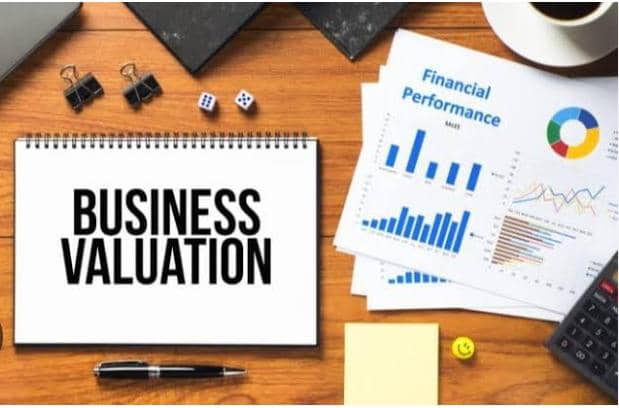.png)
Our customer support team is here to answer your questions. Ask us anything!
Chat with us on WhatsApp

Written By: Flipbz.org
Accurately valuing a business is essential for buyers, sellers, investors, and even internal stakeholders. Whether preparing for a sale, merger, investment, or legal purpose, a thorough business valuation ensures informed decision-making. Here's a detailed checklist to guide you:
Before diving into the numbers, clarify why the valuation is being conducted. The purpose will influence the method and approach used. Common reasons include:
Selling or Buying a Business: To determine a fair market value.
Attracting Investors: To showcase growth potential.
Mergers and Acquisitions: To calculate the worth of combining entities.
Litigation or Tax Purposes: For compliance in legal disputes or estate planning.
Defining the purpose ensures that the valuation process aligns with the intended outcomes.
The financial health of a business forms the foundation of its valuation. Collect the following documents:
Profit and Loss Statements: At least three to five years of data to identify trends.
Balance Sheets: A snapshot of assets, liabilities, and equity.
Cash Flow Statements: For understanding liquidity and operational efficiency.
Tax Returns: To verify reported income and financial consistency.
Accounts Receivable and Payable Records: These reveal payment cycles, customer behavior, and debts.
Having accurate and complete financial records is non-negotiable for an objective valuation.
A business does not operate in isolation. Its value is influenced by the market and industry it belongs to. Conduct a market analysis by:
Reviewing current industry trends, challenges, and opportunities.
Comparing the company to competitors regarding market share and growth potential.
Understanding the broader economic environment, including inflation and interest rates.
For example, a technology startup in an emerging market might have a higher valuation based on growth potential than a similar-sized business in a stagnant industry.
Accurately assess both tangible and intangible assets while accounting for liabilities. This step involves:
Tangible Assets: Include equipment, inventory, real estate, and vehicles.
Intangible Assets: Account for intellectual property, brand reputation, customer base, and goodwill.
Liabilities: Identify outstanding loans, pending payments, or legal claims.
Net tangible and intangible assets are critical in determining a business's book value, often a baseline for valuation.
Choosing the right valuation method is crucial. Common methods include:
Focuses on future earnings potential. The discounted cash flow (DCF) method is popular here, projecting future cash flows and discounting them to present value.
Compares the business with similar businesses recently sold. This is effective in well-defined markets with comparable data.
Calculates the value of the company’s assets minus liabilities. This approach works well for asset-heavy businesses like manufacturing.
Consider the business type, industry, and valuation purpose when selecting the method.
One-time events can distort financial records, leading to inaccurate valuations. Normalize financial statements by:
Removing one-time expenses like legal settlements or restructuring costs.
Excluding unusual revenue spikes from rare events or asset sales.
Adjusting owner-related expenses not tied to business operations, such as personal travel.
These adjustments ensure that the valuation reflects ongoing business operations.
Analyze the business's revenue streams and profitability:
Are revenues dependent on a single product or customer? Diversified income streams reduce risk.
Compare margins to industry benchmarks. Higher margins often signal operational efficiency.
Subscription models or long-term contracts provide stability.
Understanding these factors helps estimate growth potential and stability, impacting the valuation.
A business with a strong competitive advantage often commands a premium valuation. Factors include:
Proprietary technology or patents.
Strong brand recognition and customer loyalty.
Exclusive supplier or distribution agreements.
Unique market positioning.
Quantify these advantages by comparing them to industry benchmarks and competitors.
No business is without risks, and identifying them is critical for an accurate valuation. Consider:
Changes in demand, economic downturns, or new competitors.
Dependence on key personnel or inefficient processes.
New laws or compliance requirements.
Highlighting risks allows adjustments to the valuation while providing transparency to stakeholders.
Intangibles often make up a significant portion of a business’s value. Factors like brand reputation, customer loyalty, and intellectual property contribute to goodwill. Goodwill is particularly relevant in acquisitions, where the purchase price exceeds the book value.
Quantifying intangibles can be challenging, but techniques like royalty relief models or brand valuation methods can help.
Ensure the business is in good legal standing by:
Verifying licenses, permits, and certifications.
Reviewing existing contracts with vendors, employees, and clients.
Checking for ongoing or potential lawsuits.
Legal and regulatory issues can significantly impact a business’s valuation and appeal to buyers or investors.
Business valuation is complex, and professional input can ensure accuracy and credibility. Consider:
Hiring a certified valuation expert for impartial analysis.
Consulting accountants to review financial records.
Engaging legal advisors for contract and compliance review.
Professional guidance not only enhances accuracy but also adds credibility to the valuation process.
Transparency is key. Compile a detailed report summarizing:
The chosen valuation method and rationale.
Financial data and adjustments.
Assumptions, risks, and growth projections.
Supporting documents like market analysis or legal contracts.
A comprehensive report ensures stakeholders understand and trust the valuation.
Compare the valuation with similar businesses in the industry:
Use publicly available data from competitors or industry benchmarks.
Adjust for size, location, and market share differences.
Ensure consistency in methods to validate findings
Business valuations should not be static. Reassess periodically to reflect changes in market conditions, business performance, or strategic goals. Regular updates ensure relevance for decision-making.
A thorough business valuation combines financial analysis, market insights, and strategic evaluation. By following this detailed checklist, stakeholders can confidently determine a business's worth, ensuring informed decisions for sales, investments, or strategic planning.
Please register to comment.
With these components in place, your business...
Open the Listing model file located in the ap...
Discover promising partnership opportunities in various industries.
Pitch Your Startup | Find Partners
Comments